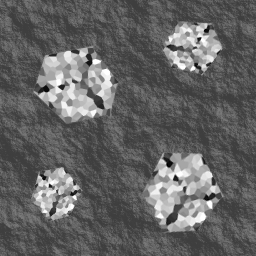

It is especially important to remove plastic mulch, which should be taken off at least two weeks prior to straw mulch. This normally will occur between mid April and early May for most prairie locations. Remove mulch in the spring as new growth begins and new leaves become a light yellow colour.
COLONY SURVIVAL STRAW FULL
Growers should experiment with the technique before adopting the practice on a full scale. Also, straw is more likely to blow off windy sites if plastic mulch is used. However, early spring plant development may require more frost control measures. This technique has improved winter survival and normally advances harvesting by seven to ten days. In early April, the plastic must be removed or "slit" to prevent plant damage caused by increased temperatures under the plastic. The plastic can be applied several weeks before straw is spread in late October. With certain cultivars and in low snow cover conditions, winter survival may be improved by applying a 1.5 mm layer of clear plastic film before plants are covered with the straw. Moving the straw mulch between the rows in the spring helps keep berries clean, conserves moistures, suppresses weeds and provides a pleasant picking area. With a plastic and straw mulch, delayed removal is even riskier. This adversely affects yield and the future survival potential of plants. Delayed mulch removal in the spring can set blooming back several days. For specific recommendations, consult your local chemical weed control bulletins. Many growers have reduced the investment in a straw spreader by building their own machine.Ī herbicide should be applied just before mulching to provide weed and volunteer grain control in the spring. The only labour required by this system is one person to drive the tractor and load the machine with the large bale. The straw spreader should apply an even cover over the entire area and should not chop the straw into short lengths.Ī straw spreader-applicator called the "Bale Buster" can apply straw directly to several rows at a time, from large round bales. Trapped air spaces in the straw layer provide the insulation for good winter protection.

Applying a thicker layer of straw does not provide a proportional increase in insulation. From 2 to 3 tons/acre or 120 small bales (4.6 to 6.7 t/ha) are required. Use straw from grain fields that are as weed-free as possible. Wheat or oat straw is the best mulch material for the Prairies. Straw should be sticking up to trap the snow, rather than lying flat. This material will lie loose and fluffy and provide a good insulation layer.

A slight wetting through irrigation will help keep the mulch in place. Mulch may blow off sites that are not properly sheltered, particularly if a combination of straw and plastic mulch is used. High slug populations have been associated with over-mulching. Timing varies with prairie location but mulch is usually applied between late October and early November. Mulch is usually applied in the late fall after several frosts but before temperature drops to -6.7 0 C. When properly applied, mulch keeps soil temperatures more uniform, prevents plants from drying out from cold and dry winds, and helps trap snow. Mulching with straw, or plastic and straw, is necessary to protect the crop from low temperature injury to crowns and roots. (1 to 1.3 cm) should be at least 74% of field capacity to facilitate rapid daughter rooting. During runnering, soil moisture at a depth of 0.4 to 0.5 in. Do not saturate soil with moisture and keep in mind the potential for rainfall. Renovate after the first full picking season and each subsequent picking year.įor rapid plant development, maintain a uniform moisture level in the soil at planting time and during the initial establishment period. No renovation is required in a first year planting. If soil is moist, runners will develop enough root and top growth by the end of the season to survive the winter. The plantation needs frequent irrigation at runnering time. Use a rolling coulter attached to the cultivator to facilitate their removal. Once the row is full, the extra runners may be cut off. Quaternary runners usually do not root deep enough to develop significantly by the end of the season. Primary runners that are hand-set early will out-yield secondary and tertiary runners 14 to 1. The special care given to establishment of runners will dramatically increase yield potential in the bearing year.


 0 kommentar(er)
0 kommentar(er)
